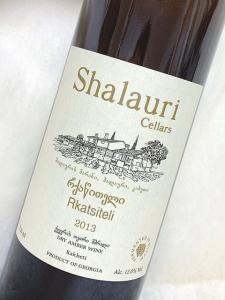-
中文名:格鲁吉亚
-
英文名:Georgian Republic
-
位置:
-
葡萄园面积:公顷
-
葡萄酒特点:
-
产区产量:
-
土壤:
Georgia (the Eurasian nation, rather than the US state) is one of the world’s oldest winemaking countries. It is believed that winemaking and viticulture first began here in the Caucasus region around 6000 years ago, in the lands that are now Georgia, Armenia, Azerbaijan and eastern Turkey. Archaeological evidence suggests that at that time, the inhabitants of this region were cultivating vines and fermenting their grapes into primitive forms of wine.
These early winemaking traditions were still prevalent many thousands of years later, as attested by the medieval Georgian hymn 'Thou Art a Vineyard'. The hymn, dedicated by King Demetrius I (1093–1156 AD) to his new kingdom, begins: 'You are a vineyard newly blossomed, young beautiful, growing in Eden.' Georgian wine traditions blossomed during Demetrius' reign and for centuries afterward, but more recently have been disrupted by the winds of political change.
The flag of the Georgian Republic
The country – officially 'The Republic of Georgia' since it declared independence from the Union of the Soviet Socialist Republics (USSR) in 1991 – has enjoyed only brief periods of political stability in the past century. Tensions between Georgia and Russia continue today, as evidenced by Russia's 2006 embargo on Georgian wine imports, which was lifted only in June 2013. During the Soviet era, a sizeable proportion of the Soviet Union's wine was made in Georgia, so post-independence Russia was a major export market. Wine represents a significant component of Georgia's economy, so the embargo had a profound effect. Wines from Moldova, just across the Black Sea from Georgia, were also included in the ban.
With a run-up of several millennia, Georgia found its wine-producing rhythm in the Middle Ages, as the eastern Mediterranean region was rocked by the Crusades. As a Christian nation, Georgia was left unscathed by the Crusaders, and was able to develop its viniculture in relative peace. It is even believed that the modern Khevsur people are directly descended from a Crusader party that settled in the Georgian highlands many centuries ago.
Christianity and wine have proven strong allies in this region of the world, particularly during the time of the Ottoman Empire, whose Islamic Sharia law prohibited wine consumption. And so wine production flourished in Georgia until phylloxera and mildew arrived from the Americas in the late 19th Century, devastating almost 150,000 acres (60,700ha) of vineyard. When Georgia came under Soviet control a few decades later, vineyards were replanted in their thousands, to satisfy the thirst of the vast USSR. The late 1980s saw a dramatic about-face in the Soviet Union's attitude to wine, in the form of leader Mikhail Gorbachev's aggressive anti-alcohol campaign, which effectively crippled Georgian wine exports.
Quite how Georgia's wine future will pan out is dependent on many factors, and is the subject of great interest to many in the wine world. The nation's wine producers may capitalize on the opportunities open to them with the 'international' grape varieties and super-ripe wine styles currently in fashion. Alternatively, they may opt to draw on historical, long-established grape varieties and wine styles; after all, Georgian wine traditions are strong, and the country's prime terroirs have been uncovered and studied over a long period, of which most wine nations would be envious. The most durable solution is likely to be a mixture of the two, a balance that even great wine nations such as Italy are currently striving to establish.
A visual distillation of time and terroir, the Georgian wine map is an impressive sight. Sprawling and complex, it shows that few areas of this ancient country have remained untouched by viticulture. It also shows great diversity of climate (from temperate to sub-tropical) and geology (from the Caucasus Mountains of the north to the river valleys and coastal plains of the west). From Kakheti in the south-east to Apkhazeti atop the Black Sea coast, it is only Georgia's most remote highlands that do not produce wine.
The key wine grapes favored in Georgia are Saperavi and Rkatsiteli, respectively the classic red and white varieties of the former Soviet republics, from Kyrgyzstan and Kazakhstan to Moldova and Ukraine. A number of other long-established varieties are widely distributed around the country. Among these, red-wine grapes are by far the most common, notably Alexandrouli, Aladasturi, Keduretuli, Ojaleshi and Usakhelauri. Their white counterparts are led by Chinuri and Mtsvani, in both Goruli and Kakhuri variants.


